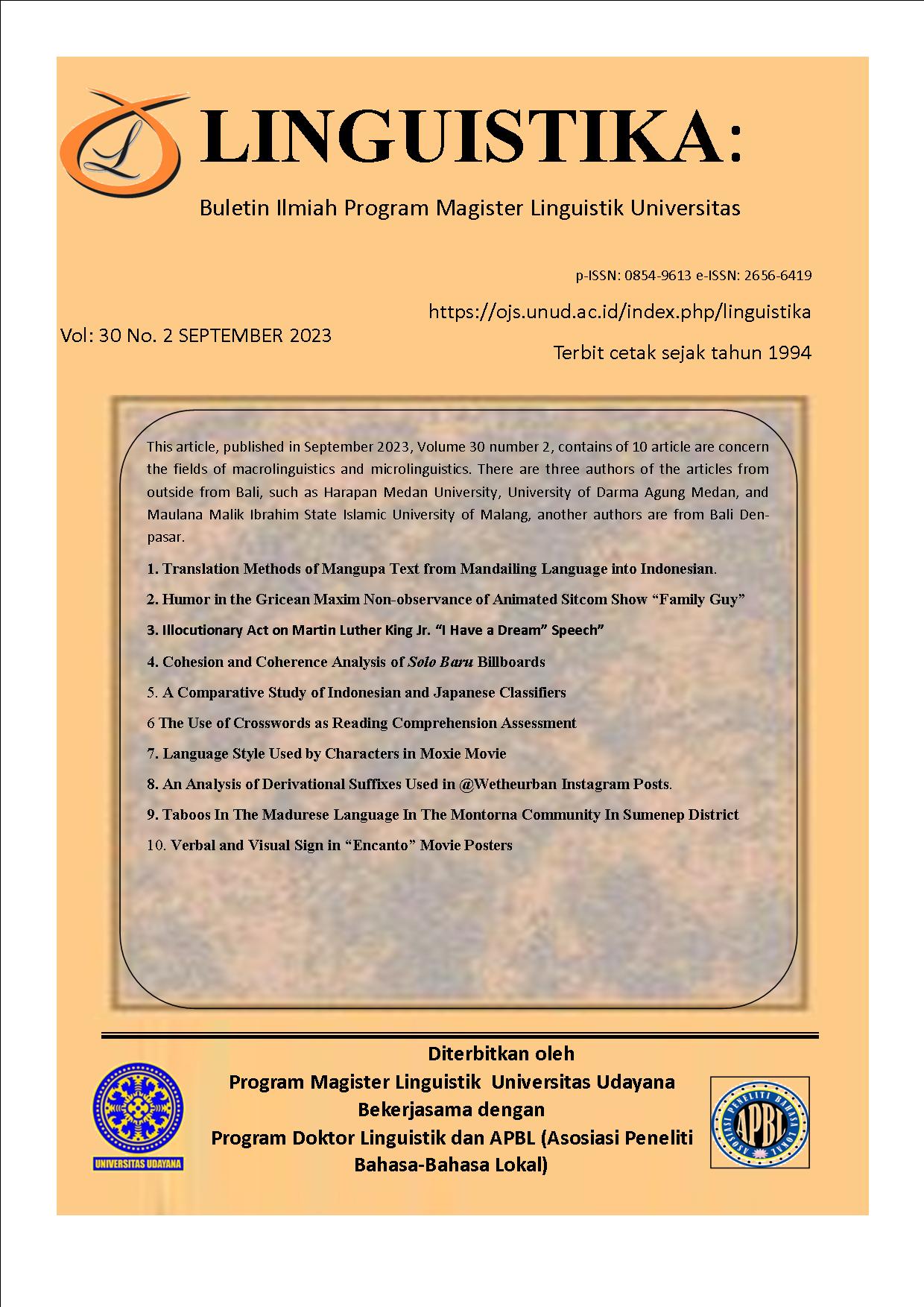A Comparative Study of Indonesian and Japanese Classifiers
Abstract
Abstract
Classifiers belong to open class noun. All languages are naturally occupied with classifiers, yet the usage is various depending on how the language treats them. Japanese language, as an obligatory-classifier language, makes the classifiers compulsory, in contrast with an optional-classifier language, Indonesian language. Despite this, Japanese and Indonesian languages treat the classifiers syntactically and semantically similar. This article aims at revealing, both the semantic and syntactic differences and similarities between Japanese and Indonesian classifiers. The analysis shows that in terms of structure, Japanese and Indonesian classifiers are similar; however, each language demonstrates difference in classifier use. Japanese language has nineteen frequently used classifiers including two types which can replace others. They can change their form by fusing with its numeral adjective as in hitori (ichi-nin), ippiki (ichi-hiki), without affecting the whole meaning of the noun phrase. Indonesian classifiers cover of twenty-two optional types. Classifiers are often omitted in spoken form to avoid formality and some of them can also change their form by adding se- prior to the numeral adjective to indicate “one object” as in sebatang rokok.













